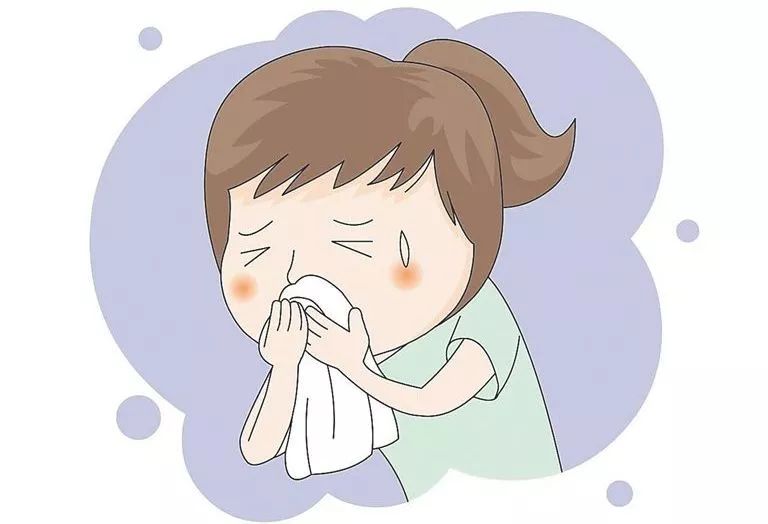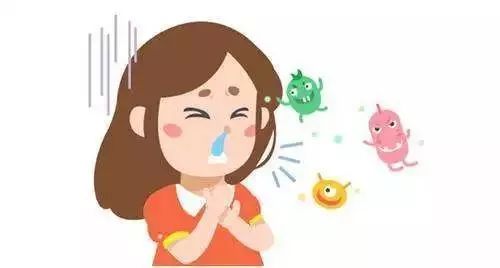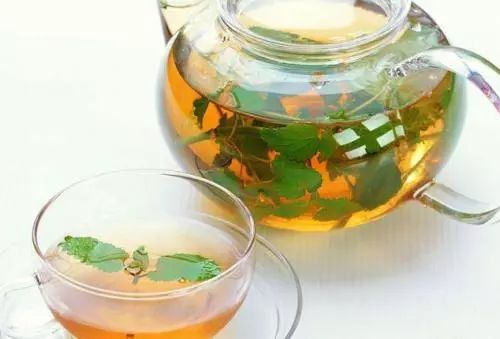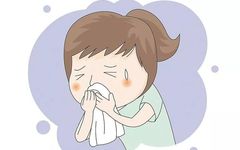Some people cannot distinguish whether they have a wind-cold or wind-heat cold. In this state of confusion, they may blindly use medication, which can lead to inappropriate treatment and delay recovery.
Through this article, you will learn about the causes of wind-heat cold, the comparison of symptoms between wind-heat and wind-cold colds, and the herbal remedies and decoctions for treating wind-heat cold.
01
What Causes Wind-Heat Cold?
Wind-heat cold is caused by the invasion of wind-heat evil and the disharmony of lung qi. It is more common in spring and is caused by external wind-heat.

Influence of External Environment
Wind-heat cold generally occurs in summer, primarily due to the invasion of wind-heat.
Common causes include getting caught in the rain or significant temperature differences between indoors and outdoors, which can easily lead to a decrease in overall or local respiratory defense, resulting in wind-heat cold.
70% of people catch a cold in summer, and during the early stages of a cold, it is easy to exhibit symptoms of wind-heat cold.
Low Immunity
Individuals who are elderly or weak have lower immunity. When the local respiratory defenses are weakened, they are more susceptible to viral and bacterial infections, leading to symptoms of wind-heat cold.
Personal Health Conditions
Common chronic diseases can easily lead to wind-heat cold, such as sinusitis and tonsillitis. Due to decreased immunity and external environmental influences, the likelihood of developing wind-heat cold increases.
Constipation
Constipation can also lead to wind-heat cold. Typically, after two days of constipation, one may experience a sore throat, followed by cold symptoms.
This is actually a symptom of wind-heat cold. When a person has difficulty in bowel movements, it can easily affect the lungs, leading to symptoms of wind-heat cold.

02
Comparison of Wind-Heat Cold and Wind-Cold Cold
(1) Throat: Both types can exhibit sore throat, but wind-heat cold will show redness and swelling of the throat, while wind-cold cold will not.
(2) Nasal Discharge: Patients with wind-heat cold often have yellow, thick nasal discharge; those with wind-cold cold typically have clear nasal discharge.
(3) Tongue: In wind-heat cold, the tip and edges of the tongue may appear red, with a thin, yellowish coating; in wind-cold cold, the edges of the tongue do not turn red, and the coating does not turn yellow.
(4) Constipation: Patients with wind-heat cold may experience constipation or hard stools, while this is less common in wind-cold cold.
(5) Fever and Thirst: Patients with wind-heat cold feel hot and thirsty, wanting to drink water; those with wind-cold cold do not experience these symptoms.
(6) Pulse: The pulse in wind-heat cold is often rapid, reaching over 90 beats per minute; in wind-cold cold, the pulse is slower, generally not exceeding 90 beats per minute.
(7) Fever and Chills: Both types exhibit elevated body temperature and chills. However, patients with wind-heat cold have a significantly higher temperature but do not feel as cold; patients with wind-cold cold have less noticeable fever but feel very cold.

03
Three Decoctions for Treating Wind-Heat Cold
(1) Mint Congee (from “Song Yu Lu”)
Boil mint to extract the juice and let it cool. Cook japonica rice with water to make congee, and when the congee is nearly done, add the mint juice and an appropriate amount of rock sugar.
Serve warm; sweating is optimal. Mint is a key herb for dispersing wind-heat, and the addition of japonica rice and rock sugar helps promote sweating and protects the stomach. This decoction is most suitable for those newly affected by wind-heat.
(2) Mulberry Leaf and Chrysanthemum Mint Drink
Mulberry leaves, chrysanthemum flowers, mint, bitter bamboo leaves, and a little honey are boiled with an appropriate amount of water and consumed frequently as tea. Mulberry leaves clear lung heat; chrysanthemum disperses wind-heat and brightens the eyes.
Mint is a key herb for dispersing wind-heat and can quickly relieve symptoms such as fever and headache. It is also suitable for patients with hypertension or headaches and blurred vision.

(3) Steamed Snow Pear with Fritillaria and Adenophora
Peel and core one snow pear, fill it with an appropriate amount of fritillaria, adenophora, mint, and rock sugar, place it in a bowl with water, and steam until cooked. Consume in the morning and evening for several days.
This decoction moistens dryness, stops cough, transforms phlegm, and clears the lungs, especially suitable for elderly and children suffering from post-cold heat illness leading to dry throat cough, lung heat with yellow phlegm, or fluid damage with thirst and dry stools.
04
Patent Medicines for Wind-Heat Cold
(1) Antiviral Oral Liquid
Ban Lan Gen (Isatis Root), Shi Gao (Gypsum), Lu Gen (Reed Rhizome), Sheng Di Huang (Rehmannia Root), Yu Jin (Curcuma), Zhi Mu (Anemarrhena), Shi Chang Pu (Acorus), Guang Huo Xiang (Patchouli), Lian Qiao (Forsythia). Functions: Clears heat, dispels dampness, cools blood, and detoxifies. Used for wind-heat cold, warm disease fever, upper respiratory infections, influenza, mumps, and other viral infections.
(2) Ban Lan Gen Granules
Ban Lan Gen. Excipients include sucrose and dextrin. Functions: Clears heat and detoxifies, cools blood, and benefits the throat.
Used for sore throat and dry mouth caused by excess lung and stomach heat; acute tonsillitis and mumps with the above symptoms.
(3) Yin Qiao Jie Du Pian
Jin Yin Hua (Honeysuckle), Lian Qiao (Forsythia), Mint, Jing Jie (Schizonepeta), Dan Dou Chi (Fermented Soybean), Niu Bang Zi (Burdock Fruit, roasted), Jie Geng (Platycodon), Dan Zhu Ye (Lophatherum), Gan Cao (Licorice).
Excipients include starch, sodium carboxymethyl starch, magnesium stearate, talc, and film coating premix. Functions: Disperses wind, clears heat, and detoxifies. Used for wind-heat cold, fever, headache, cough, dry mouth, and sore throat.
(4) Niu Huang Jie Du Pian
Niu Huang (Bovine Bile), Xiong Huang (Realgar), Shi Gao (Gypsum), Da Huang (Rhubarb), Huang Qin (Scutellaria), Jie Geng (Platycodon), Bing Pian (Borneol), Gan Cao (Licorice). Functions: Clears heat and detoxifies. Used for excess heat, sore throat, and gum swelling, mouth ulcers, and red, swollen eyes.
05
Further Reading
Click the image below to view the TCM health column, featuring 15 selected articles on summer-specific TCM health knowledge. Be sure to check it out!

——The End——



